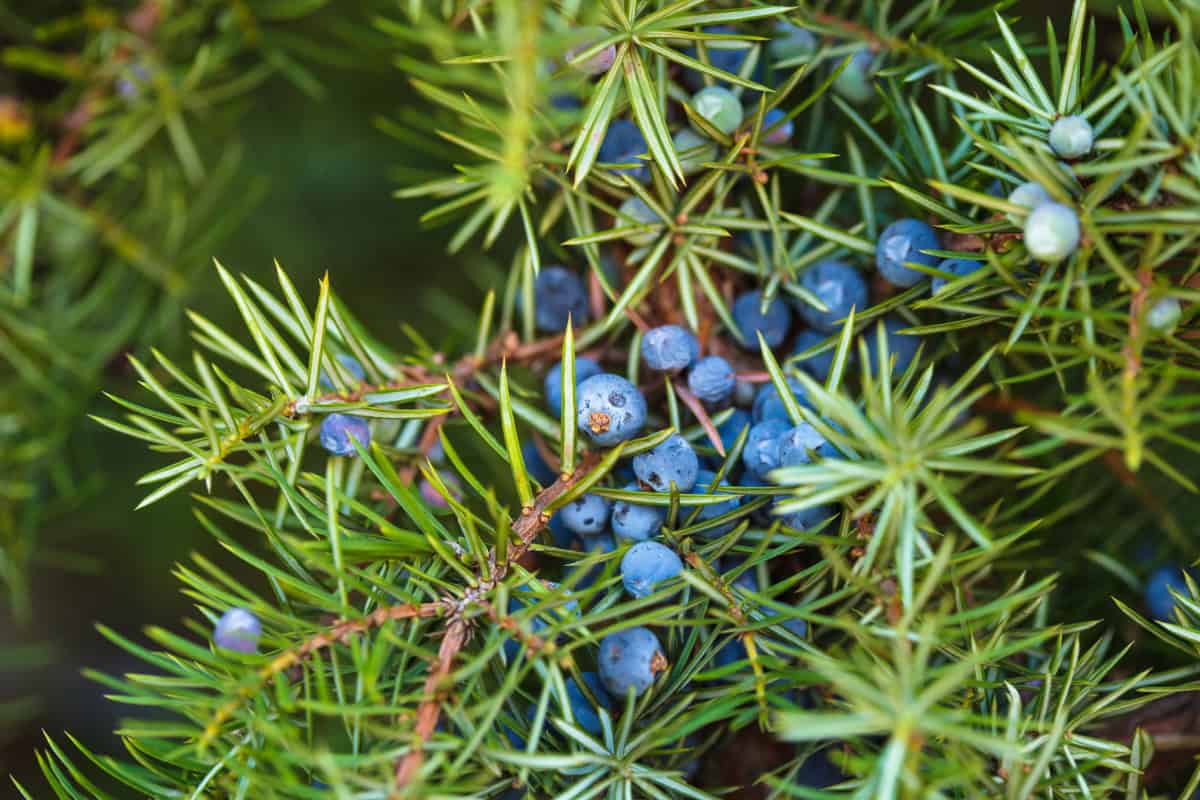
This comprehensive Juniper firewood profile explores the aromatic champion of western firewoods, delivering 15,000-18,000 BTUs per cord with exceptional fragrance characteristics and outstanding fire-starting properties.
Known for its distinctive cedar-like aroma and clean burning qualities, Juniper offers premium sensory experiences for users who value natural aromatherapy and traditional smoking applications.
- Quick Reference Stats: Juniper Firewood Profile
- Overview & Identification
- Geographic Distribution
- Burning Characteristics
- Sensory Experience
- Processing & Preparation
- Specialized Uses
- Pros & Cons
- Best Practices & Tips
- Bottom Line: Juniper Firewood Profile
- 🌲 Juniper Firewood Quick Reference Table 🔥
- Related Resources: Juniper Firewood Profile
Quick Reference Stats: Juniper Firewood Profile
- Wood Type: Softwood (coniferous evergreen)
- BTU Rating: 15,000-18,000 BTUs per cord
- Ease of Splitting: Easy to Moderate (4/5 scale)
- Seasoning Time: 3-6 months
- Smoke Production: Low to Moderate
- Spark/Pop Factor: Moderate
- Scent Profile: Distinctive – Strong cedar-like, resinous aroma
Overview & Identification
The juniper firewood profile showcases this wood as the premier aromatic option in western regions, offering moderate heat output along with a naturally unmatched fragrance that turns any fire into a total sensory experience.
This hardy conifer delivers clean burning performance while providing the classic cedar aroma that has naturally made it a top choice for recreational fires and traditional cooking, further cementing its spot in any juniper firewood profile.
Although its BTU output is lower than most hardwoods, the juniper firewood profile is still highly prized for its naturally aromatic qualities and deep cultural significance.
Common Names: Juniper, Eastern Red Cedar, Utah Juniper, Rocky Mountain Juniper, Western Juniper
Scientific Name: Juniperus species (family Cupressaceae)
Tree Characteristics: Small to medium evergreen tree or large shrub typically reaching 15-40 feet with scale-like or needle-like leaves and distinctive fibrous, reddish-brown bark. Produces small blue berries and aromatic wood throughout.
Geographic Distribution
Where You’ll Find It: Widespread across western United States and some eastern regions. Eastern Red Cedar found throughout eastern US, while Utah and Rocky Mountain Juniper dominate western ranges
Availability: Good availability in western regions from land clearing, fence line management, and forest thinning operations
Growing Conditions: Extremely drought tolerant and adaptable to poor soils. Thrives in arid and semi-arid regions, often found in areas too dry for other trees. Pioneer species in disturbed areas.
Burning Characteristics
Heat Output & Performance
- BTU Content: Moderate performance suitable for recreational use and supplemental heating
- Burn Duration: Burns hot and fast with quick heat delivery
- Coaling Properties: Forms minimal coals – burns to ash relatively quickly
- Flame Characteristics: Produces hot, bright flames with excellent visual appeal
Ignition & Fire Management
- Ease of Lighting: Excellent ignition properties – lights easily and burns readily
- Best Fire Stage: Outstanding kindling and excellent for fire starting and quick heat
- Burn Rate: Fast burning provides immediate heat but requires frequent feeding
- Heat Consistency: Delivers quick, intense heat but doesn’t sustain long burning
Sensory Experience
Smoke Profile
- Smoke Volume: Low to moderate smoke production with excellent aromatic qualities
- Smoke Color: Light, aromatic smoke with good dispersal characteristics
- Smoke Flavor: Distinctive cedar flavor highly prized for smoking and cooking
- Creosote Production: Low due to natural preservative oils and clean burning
Sound & Visual
- Crackling/Popping: Moderate crackling and popping with occasional sparks
- Sparking Tendency: Moderate spark production – requires normal fire safety precautions
- Flame Appearance: Bright, attractive flames with excellent visual appeal for recreational fires
Aroma
- Burning Scent: Strong, distinctive cedar fragrance that permeates surrounding area
- Pleasant Factor: Widely beloved for aromatherapy and nostalgic qualities
- Intensity: Strong aromatic presence that defines the fire experience
Processing & Preparation
Splitting Characteristics
- Ease of Splitting: Generally splits well with mostly straight grain patterns
- Grain Pattern: Straight grain with occasional knots that splits cleanly in most cases
- Tools Needed: Standard splitting axe or maul handles most pieces effectively
- Best Splitting Conditions: Splits well both green and dry with consistent results
Seasoning Requirements
- Drying Time: 3-6 months for optimal burning due to naturally low moisture content
- Moisture Content: Reaches optimal 15-20% moisture content relatively quickly
- Seasoning Tips: Naturally dry wood seasons faster than most species
- Storage Considerations: Standard stacking with good air circulation – resistant to rot
Processing Notes
- Chainsaw Considerations: Cuts cleanly with aromatic sawdust – pleasant processing experience
- Bark Characteristics: Distinctive fibrous, reddish-brown bark that strips easily
- Handling: Moderate weight with good density for size – manageable handling
Specialized Uses
Aromatherapy & Wellness Applications
- Natural Fragrance: Outstanding aromatic properties provide natural aromatherapy
- Stress Relief: Traditional use for relaxation and mental clarity
- Insect Repellent: Natural cedar oils help deter insects around fire areas
- Traditional Medicine: Historically used for respiratory and wellness applications
Cooking & Smoking Applications
- Smoking Excellence: Premium choice for smoking meats, fish, and game
- Flavor Profile: Imparts distinctive cedar notes excellent for beef, lamb, and game
- Traditional Cooking: Preferred wood for Native American and southwestern cooking traditions
- Grilling Applications: Excellent for adding aromatic smoke to grilled foods
Pros & Cons
Advantages
- Outstanding aromatic properties – premier fragrance wood
- Excellent fire-starting and kindling characteristics
- Fast seasoning time due to naturally low moisture
- Clean burning with pleasant, aromatic smoke
- Easy splitting with generally cooperative grain
- Excellent for cooking and smoking applications
- Natural insect-repelling properties around fires
- Drought-resistant source – sustainable in arid regions
- Cultural and traditional significance
- Beautiful appearance with distinctive reddish wood and bark
Disadvantages
- Lower BTU output compared to hardwoods
- Burns very fast requiring frequent fire feeding
- Moderate spark production requires safety awareness
- Limited coaling ability for extended heat retention
- Not suitable for primary heating applications
- Strong aroma may be overwhelming for some users
- Limited availability outside western regions
- May not provide long-lasting fires for serious heating
- Softwood characteristics burn quickly
- Can be more expensive due to aromatic premium
Best Practices & Tips
Maximizing Aromatic Benefits
- Outdoor Use: Perfect for campfires and outdoor recreational burning
- Mixing Strategy: Combine with longer-burning hardwoods for extended aromatic fires
- Storage Benefits: Even stored wood provides pleasant workshop and storage area fragrance
- Seasonal Use: Excellent for special occasions when aroma enhances experience
Cooking & Smoking Optimization
- Meat Selection: Outstanding for red meats, game, and fatty fish
- Temperature Control: Use with other woods for temperature management
- Flavor Balance: Start with small amounts to gauge aromatic intensity preference
- Traditional Techniques: Learn from southwestern and Native American cooking traditions
Fire Building Strategy
- Kindling Excellence: Use as primary fire starter and transition to heavier woods
- Quick Heat Applications: Perfect for rapid warmth and fast heat delivery
- Recreational Focus: Ideal for social fires where aroma enhances gathering experience
- Safety Awareness: Monitor for sparks and maintain appropriate fire safety distance
Bottom Line: Juniper Firewood Profile
Juniper represents the ultimate aromatic firewood experience for users who prioritize sensory qualities and traditional applications over maximum heat output.
While not suitable for primary heating, its distinctive cedar fragrance, excellent fire-starting properties, and cultural significance make it invaluable for recreational fires and specialty cooking applications.
Best For: Aromatic enthusiasts, western region users, smoking and cooking applications, recreational fires, fire starting, and those who appreciate traditional woods
Skip If: You need maximum BTU output, primary heating wood, dislike strong scents, require long-burning fires, or live outside regions where it’s readily available
If you want a fast, visual recap of Juniper firewood’s key stats and uses, check out this quick reference table—everything you need is right below!
🌲 Juniper Firewood Quick Reference Table 🔥
Juniper delivers fast heat, aromatic smoke, and easy splitting. Famous for its signature cedar scent, this adaptable wood seasons quickly, offers great fire starting, and adds a sensory hit to any fire or smoker. Perfect for grilling and aromatherapy, especially in the western US.
| Characteristic | Rating/Value | Notes |
|---|---|---|
| 🔥 BTU per Cord | 15,000-18,000 | Moderate heating value |
| ⚖️ Density | Medium | Lighter than hardwoods |
| ⏰ Seasoning Time | 3-6 months | Fast drying, naturally low moisture |
| 🪓 Splitting Difficulty | Easy-Moderate (4/5)⭐ | Generally cooperative |
| 💨 Smoke Production | Low-Moderate | Aromatic, pleasant smoke |
| ✨ Spark/Pop Factor | Moderate | Requires normal safety precautions |
| 🚀 Ignition Ease | Excellent | Outstanding fire starting |
| ⚡ Burn Rate | Fast | Quick heat delivery |
| 🔥 Coaling Ability | Poor | Burns to ash quickly |
| 🌸 Scent Quality | Exceptional | Distinctive cedar aroma |
| 🍳 Cooking Suitability | Excellent | Premium smoking wood |
| 🌱 Sustainability | Good | Drought-resistant, often cleared |
| 📍 Regional Availability | Western US primarily | Limited in other regions |
| 💰 Cost Level | Moderate-Premium | Aromatic value pricing |
| 🎯 Best Use | Aromatherapy, smoking, kindling | Sensory experience specialist |
| 🏆 Overall Rating | Premier aromatic firewood |
Related Resources: Juniper Firewood Profile
Last updated: 8/22/2025


